Description
CHAPTER ONE
INTRODUCTION
1.0 Introduction
This chapter discusses the background to the research problem, study question and objectives.
1.1 Background to the Study
Teacher strikes and labor conflicts create a difficult, time consuming, and emotionally strained environment for school leaders (Vesneske, 2007). Unions have been known to represent primary and secondary school teachers in many countries. Previous studies by (Johnson; 2009, Baker; 2011) have shown how teacher unions influence student achievement. Much of this research focused on how unionism affects the production of education, through changes in curriculum, changes in the allocation of resources and changes in the incentives. What is known about the influence of strikes on student achievement is very less (Baker, 201 1) although strikes can have a multitude of effects, including creating major inconvenience for parents, the more often cited influence in the crusade against the teachers’ right to strike is on student learning. The logic here is simple: students can’t learn if they are not in school. In fact teachers’ right to strike is often portrayed as a threat to children’s right to learn. Several studies from a series of Pennsylvania teacher strikes in the early 1980s found that school strikes had a negative effect on both student attitudes toward school and their achievement in school intensive subjects such as math and science (Caldwell & Jeffreys, 1983). Although later studies (Thornicroft, 1994; Zirkel, 1992) question the conclusions of the earlier authors; they note that the influence of school strikes on student academic progress is inconclusive, not necessarily inconsequential. For example, although no direct cause and effect was claimed per se, (Thornicroft, 994) acknowledged that most strikes are undertaken by labor unions during collective bargaining. The object of collective bargaining is to obtain a contract (an agreement between the union and the company) which may include a no-strike clause which prevents strikes, or penalizes the union and/or the workers if they walk out while the contract is in force. The strike is typically reserved as a threat of last resort during negotiations between the company and the union, which may occur just before, or immediately after, the contract expires.
This study examines the influence of strikes actions on the academic performance of students in Nigeria.
1.2 The Statement of the Problem
It is noteworthy that cases of teachers’ strikes have been reported as far back as 2001. Since then, there has been an increase in the frequency and number of teachers’ strikes in recent years. The increase in the teachers strike activity has led to renewed attention to the effects of these labor disputes have on students’ academic performance. While teacher’s strikes have undoubtedly disrupted the teaching in schools, there have been few empirical studies of the potential academic effects of strikes in Nigeria. Nigerian education stakeholders have claimed that strikes have an adverse influence on student achievement. However, they have produced no evidence to support this claim. Because many students lose learning time over the striking period and some students need more time on task to master content which is useful during examination, Many of this strikes happen during the crucial months of Academic Endeavors. The commitment and determination of Nigeria government to provide education as a means of developing human resource cannot be overlooked. Over the years, the government has made several policy pronouncements and institutional changes aimed at improving the quality of education. According to Republic of Nigeria (2005) the Nigeria government spends over 34% of its annual budget on education. However, there is little evidence that this increased expenditure on education has resulted to good NECO performance. It is against this background that it became necessary to investigate the influence of teachers strike on NECO achievement.
1.3 The Purpose of the Study
This research investigated and established the influence of teacher’s strikes on student performance in the national examination in secondary schools.
1.4 Research Objectives
The main objective found out how teachers strike affected student performance in secondary schools. The study aimed at studying the performance of students in NECO after the teacher’s strike; the specific objectives of the study determined;
- The relationship between teachers strikes duration and NECO performance.
- How performances varied with students in different school categories.
- other effects of teachers strike actions on students.
1.5 Research Questions
The study answered the following questions:
- Do teacher’s strikes duration affect NECO performance?
- Do this performance vary among students in different school categories?
- What are other effects of teachers strike actions on students?
1.6 Significance of the Study
This study provides valuable insights to the government, teachers, development partners and the communities on the effects and challenges of work stoppage. The findings of the study provide the Ministry of Education and those involved in education with data on how deal with work stoppage in schools. In turn, the Ministry of Education is in a position to analyze these strategies and establish their effectiveness, in order to take effective measures regarding how to deal with future teachers’ strikes. By investigating the challenges brought by the strikes, the government is likely to be in a position to come up with strategies to deal with the teachers’ strikes more effectively.
The study helps the society to understand the contribution made by the teachers and therefore be part of raising their social and economic status of the teachers by recognizing their role in the national development and therefore be at the forefront in enhancing ways through which attractive condition of service can be provided.
The study is beneficial to teachers because if the recommendation of this study is implemented the challenges they face on the ground as far as the strikes are concerned will be dealt with and teachers will be left more motivated with high morale. The end result would be to improve the quality of secondary education in the country.
This study is beneficial to scholars, researchers and organization that might have an interest in developing the research in teacher’s strikes and student’s achievement further.
1.7 The Scope of the Study
The study investigated how teachers strike affects secondary school performance in Makurdi. Data was gathered from principals, teachers, and trade union and Educational officers from the Benue.
1.8 Limitations and Delimitation of the Study
In data collection, the study relied on questionnaires, which included self-assessment interviews to Education and Union officials. As pointed out by Sharma (2008), research has shown that individuals tend to over-rate themselves on desirable traits and under-rate themselves on undesirable traits. This means that some Education and union officials may over-rate themselves, which may lead to the wrong conclusion about the effect of strikes in secondary schools in Nigeria.
This study should be carried out in both primary and secondary to improve its validity. Since the study was carried out with a sample of public secondary school in Makurdi, the findings of the study were limited to this population and may not be generalized to all Nigerian schools. Any generalization to other populations may be made with dire considerations of the population’s characteristics and norms of such populations.
1.9 Operational Definition of Terms
Teacher: One who teaches or instructs; one whose business or occupation is to instruct others; an instructor; a tutor
Performance: This is the act of doing something successfully. For operational purposes, performance is defined as the scores attained in examinations.
Strike: A work stoppage by union members that is endorsed by the union and
that follows the legal requirements for striking.
Secondary School: Refers to post primary institution in which students receive regular instructions for four years from form 1-4.

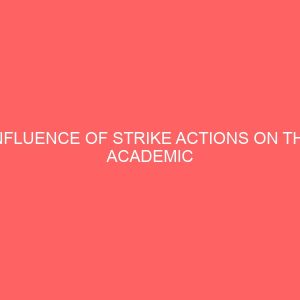
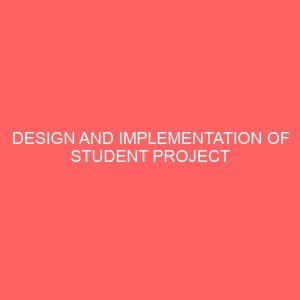
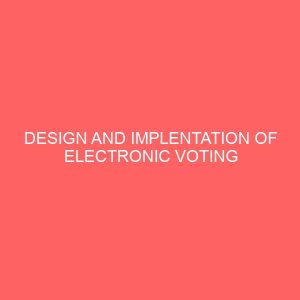
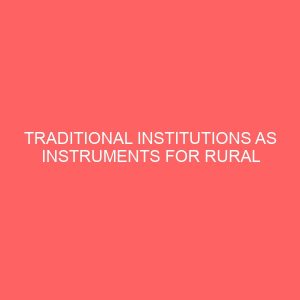
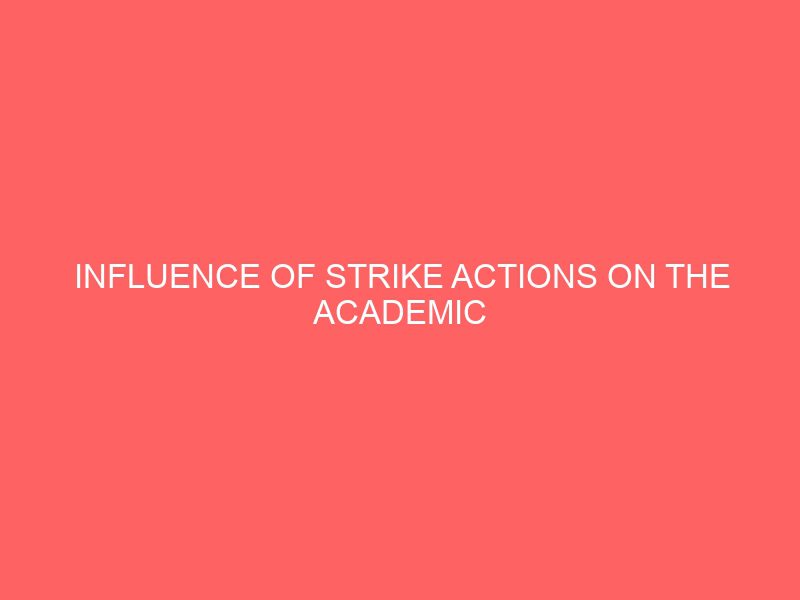
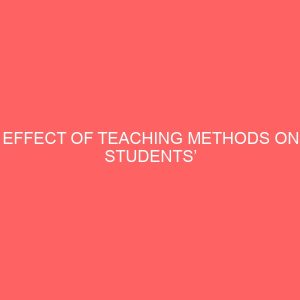
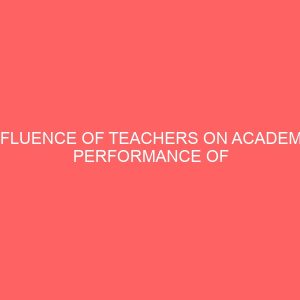
Reviews
There are no reviews yet.